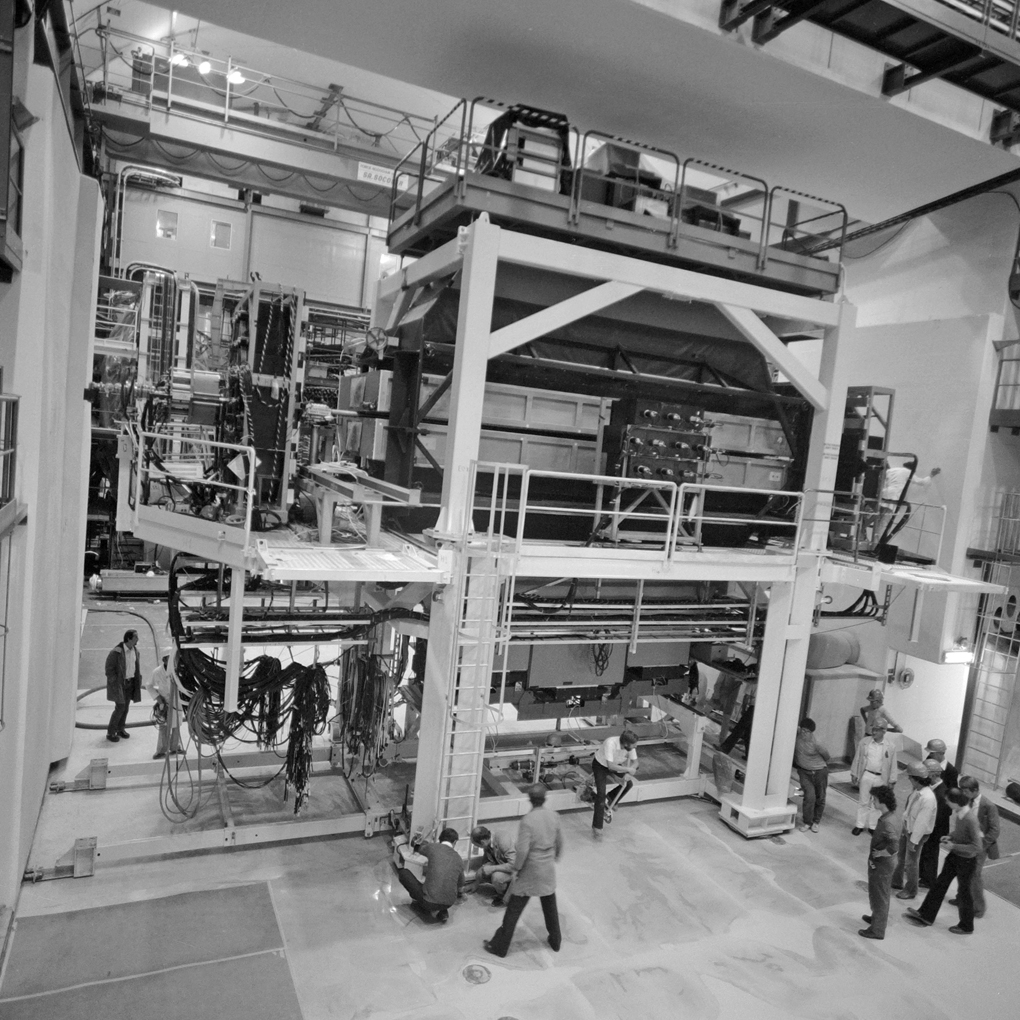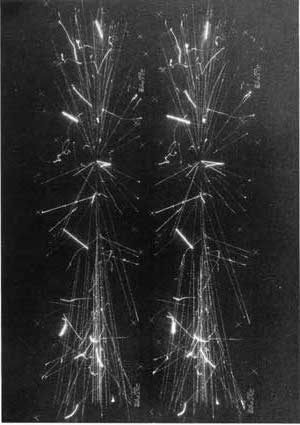Cambridge HEP Group History - UA5
Richard Ansorge, Chris Booth, Bob Dewolf, David Munday, Jonathan Ovens, John Rushbrooke, Pat Ward, David Ward, Chris Webber, Tony Weidberg, Tom White
The UA5 Collaboration investigated many features of the physics of 540 GeV proton-antiproton collisions, including
- charged particle production; pseudorapidity and multiplicity distributions
- photon production; pseudorapidity distributions
- charged-charged and charged-neutral particle correlations
- neutral and charged strange particle production and their pT-distributions
- a study of high multiplicity events; search for Centauro events, etc.
The basic detector consisted of two large (6m) streamer chambers, triggered by hodoscopes at either end, and viewed by cameras via image intensifiers. Charged tracks could be observed down to 0.75°, and hence over most of the pseudorapidity range in which they are produced; photons were observed over the same pseudorapidity range. Neutral and charged particle decays were also identified in the apparatus.
Later, a calorimeter 4m long was installed to identify neutral particles in the central region, to give a rough energy measurement for charged and neutral particles, and to provide a trigger on transverse energy. A small wire chamber closely fitted to the vacuum chamber permitted triggering selectively on high multiplicity events. Together with a beryllium vacuum chamber introduced to reduce secondary interactions, the upgraded UA5 detector was used to continue hadron physics studies at the highest energy available.
[Text adapted from the abstract of the CERN Grey Book]


